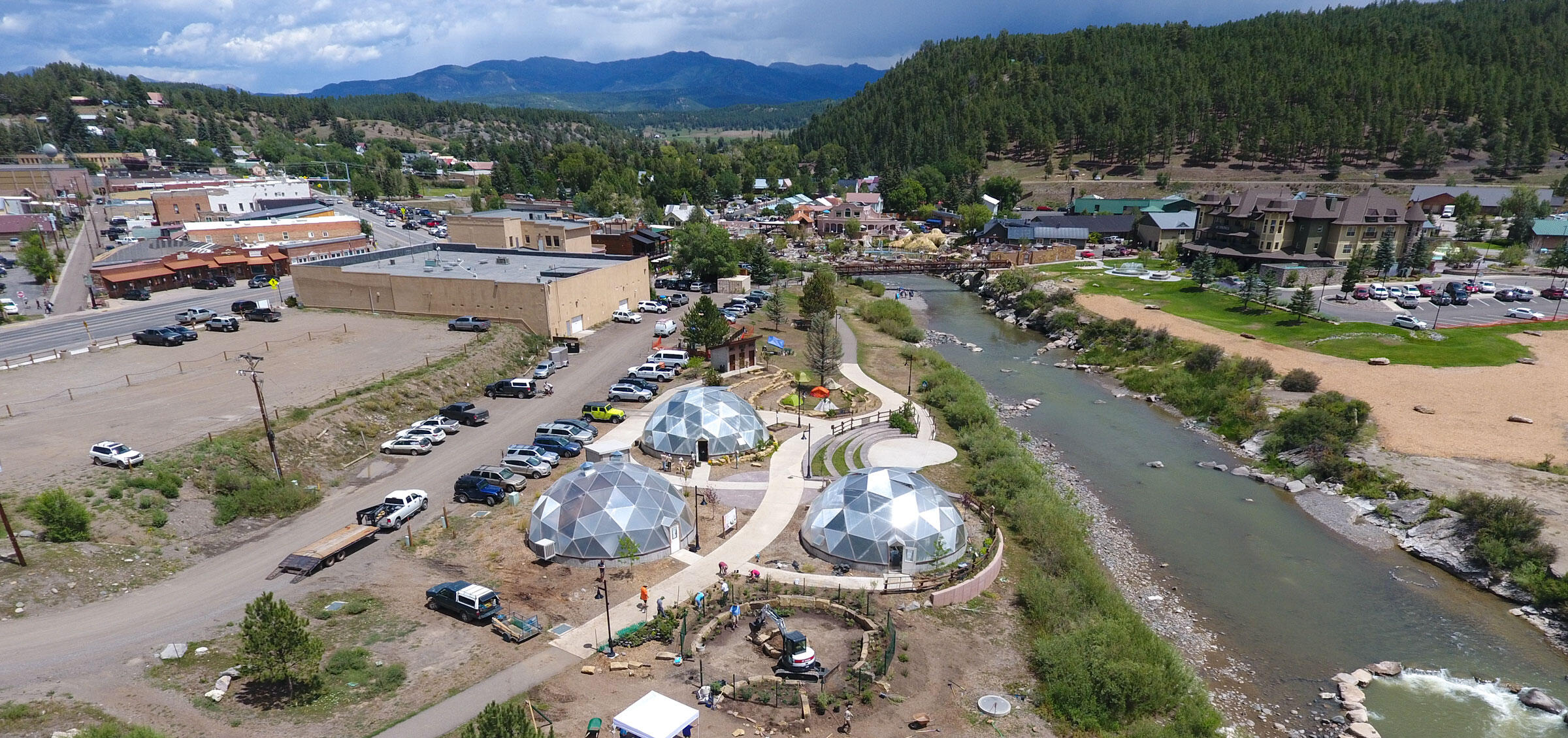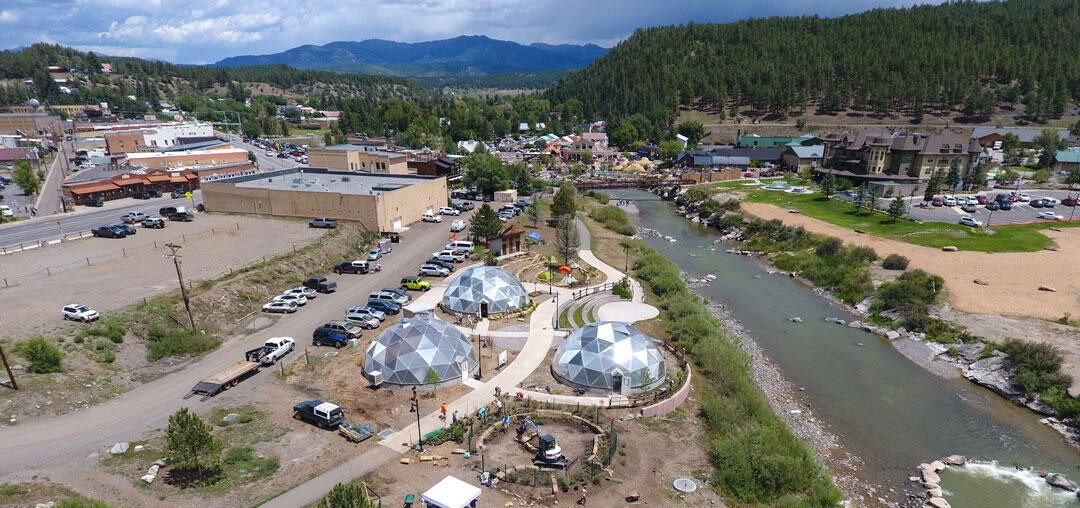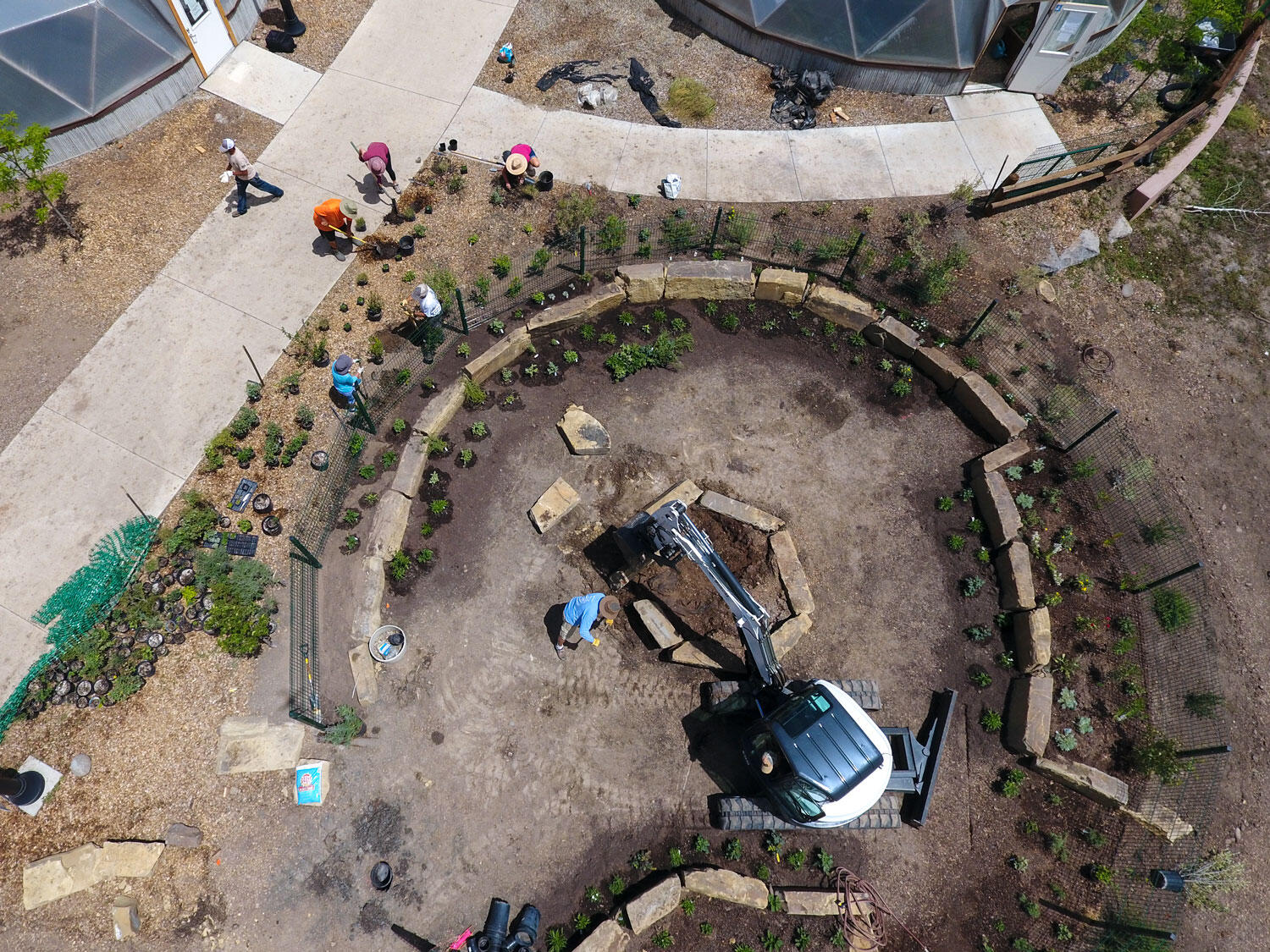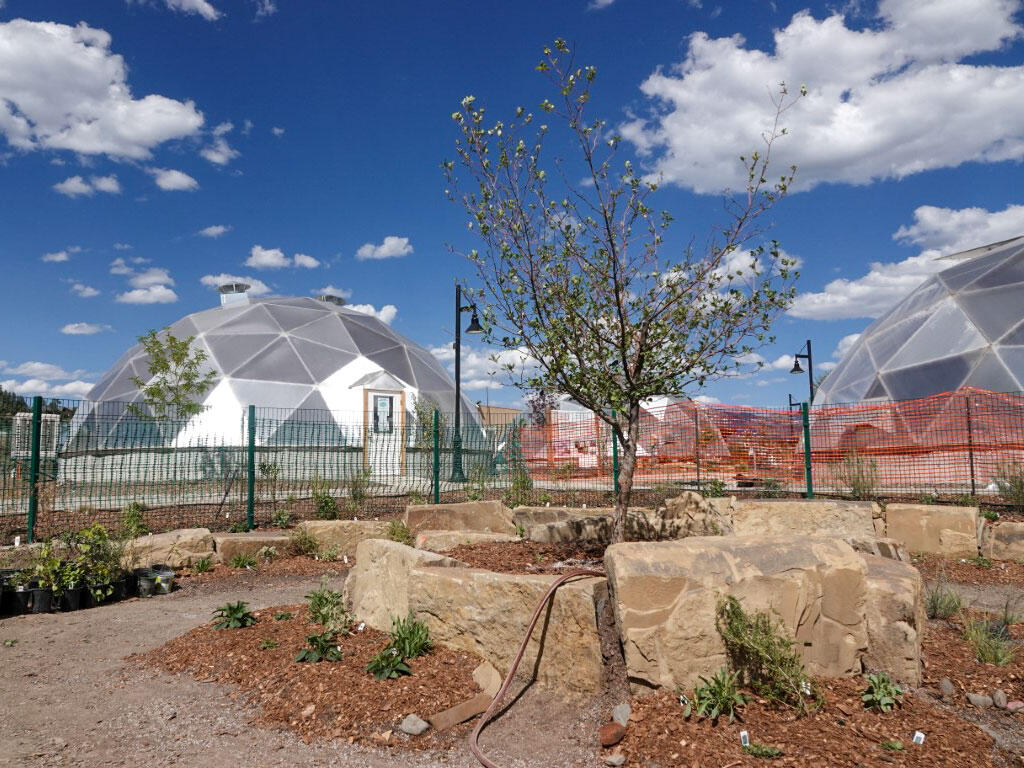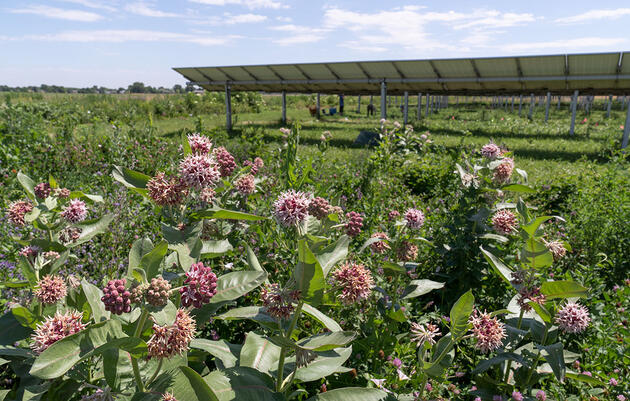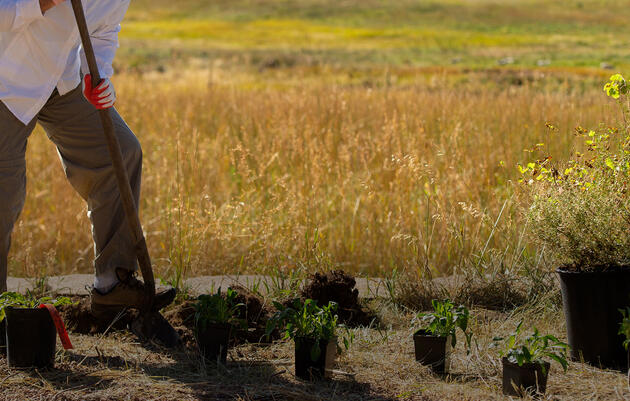In late July, amidst alternating summer heat and afternoon monsoons, volunteers gathered to plant locally and regionally native plant species in southwestern Colorado. Housed at the Geothermal Greenhouse Partnership (GGP) site in downtown Pagosa Springs, members from various groups (Weminuche Audubon Society, Mountain High Garden Club, CSU Extension Master Gardeners, and GGP) came together to install a Habitat Hero demonstration garden despite the current pandemic.
Supported in part by a Coleman and Susan Burke National Audubon Plants for Birds grant, the project showcases the need to plant species that create ecological connectivity in our communities and supports birds and other pollinators. The GGP site is along the San Juan River Walk and provides a visible location to ensure that visitors and residents will take note of this simple yet vital action they can make in their own backyards to better bird habitat.
While masked and maintaining social distance, groups of 10 volunteers attended a number of two-hour planting sessions throughout the week, effectively installing some 415 native plants of more than 40 species. The week began with a Habitat Hero 101 virtual course from Jamie Weiss (Audubon Rockies Habitat Hero coordinator) and culminated with an online viewing of Hometown Habitat, a film by Catherine Zimmerman, featuring community action across the country “showing how and why native plants are critical to the survival and vitality of local ecosystems.” Douglas Tallamy, a researcher and instigator in the native plants movement, narrates this inspiring documentary.
Only a week earlier, crew members from the SW Conservation Corps (four high school students from Durango and Pagosa Springs and two site supervisors) installed a 42-foot circular fence and hardscaped the site inside and out, moving stone and soil to prepare planting beds for the second week’s installation. This group’s hard work was sponsored by a Get Outdoors Colorado (GOCO) grant partnered through the GGP and Rockies.
The centerpiece of the garden is a native river hawthorn (Crataegus rivularis), a species known for its exceptional habitat value to birds for both forage and protection. Thank you to David Temple and Trees of Trail Canyon in nearby Cortez, Colorado, for contributing this beautiful 10-year-old hawthorn, a tree that historically has symbolized strength and protection and produces showy white flowers each spring.
After a truly collaborative effort, we are grateful for the community’s support and commitment to the completion of this project. More than 70 volunteers logged more than 130 hours in creating this garden. Weminuche Audubon, the local Audubon chapter, played a large role in supporting this project and plans to name the garden in Terry Hershey’s honor for her role in bringing conservation to the regional forefront. Hats off to these folks in helping to promote a better future for birds!

